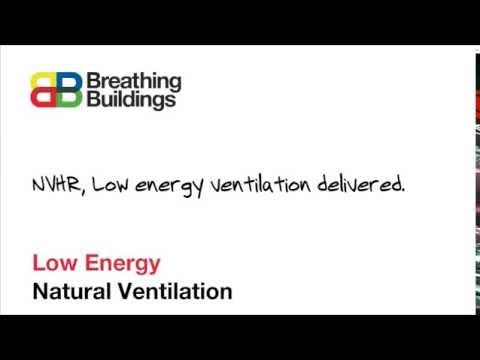FAQs – Regulations
Does Natural Ventilation get me BREEAM points?
Yes, the inclusion of natural ventilation alone will directly help you gain 1 BREEAM point. However you can gain many more points indirectly from natural ventilation.
Here are just some of the hidden benefits of natural ventilation:
- A building designed to incorporate a natural ventilation strategy will typically be more energy efficient so there will be CO2 savings.
- Naturally ventilated buildings tend to be shallower plan, as you need a certain proximity to windows/openings, so the building will tend to have better day lighting and lower lighting requirements.
- The building can use free cooling and reduce the use of refrigerants.
These are some of the areas where additional BREEAM points can be obtained:
- Day lighting
- View out
- Reduction in CO2 emissions
- Free cooling
- Indoor air quality
- Thermal comfort
- Thermal zoning
- Refrigerant GWP – building Services
Does Natural Ventilation meet BB101?
Yes! A well-controlled naturally-ventilated building can meet BB101 both in terms of providing occupants with fresh air and in terms of preventing overheating in summer.
BB101 is the regulation for ventilating school buildings. Much of the concern around natural ventilation arises when it is cold outside and people shut off the system to avoid cold draughts, obviously our unique, natural mixing ventilation strategy avoids this problem.
BB101 in its current form was published in 2006, and is set to be replaced with a fully updated version. To read Breathing Buildings review of the upcoming revision to BB101 Ventilation in Schools, follow the link below.
BB101 – Ventilation in Schools
How does BB93 apply?
Table 1 in BB93 (2015) gives upper limits for indoor ambient noise level in occupied spaces based on LAeq,30mins. For a new-build classroom this is 35dB. If the space is naturally ventilated, controlling CO2 levels to 1500ppm occupied daily average, then the maximum allowable noise level is increased by 5dB to 40dB. Assuming 10-15dB of attenuation through a partially open window this means that natural ventilation is definitely achievable with external noise levels up to 50-55dB.
In addition to the above relaxation, internal noise levels can increase to 55dB for the hottest 200 hours of the year in order to prevent overheating. Breathing Buildings can model overheating with windows open for only the hottest 200 hours a year to ensure compliance with both BB93 and the overheating criteria. This allowance extends the range of sites that have the potential to be naturally ventilated up to external noise levels of 65-70dB.
For information on acoustic attenuation which can be provided with Breathing Buildings’ products, please visit Acoustic Attenuation.
All Breathing Buildings’ equipment is compliant with the BB93 requirements for noise generated by ventilation equipment.
How does the e-stack system comply with BB101 minimum guaranteed ventilation rates in winter, and minimise energy consumption?
The system is sized to meet minimum average ventilation rates of 3l/s/person in winter. The system does this by monitoring to CO2 levels in the room and feeding the signals back to our controller which in turn alters the damper position to admit the correct amount of fresh air into the room. The temperature of the incoming air is also measured to ensure that the fans run at a suitable speed to achieve the correct mixing ratios with internal classroom air.
The system minimises heating energy consumption because no preheating is applied to the incoming air, because it enters as a mixed airstream at high level.
How does the e-stack system comply with BB101 summer overheating?
Breathing Buildings carry out their own thermal modelling of spaces taking into account solar gain all other casual gains in the space, and using the closest CIBSE test reference year (TRY) weather file to predict summertime temperatures and ensure sufficient ventilation area is provided to prevent summertime overheating in accordance with BB101.
What about air leakage testing, surely putting lots of big holes in the building will create issues?
The dampers which are integral to our R, S and F-series units have been tested for air leakage. The high performance variable control dampers provide air leakage at 25% lower levels than current building regulations of 5m3/hr/m2.




